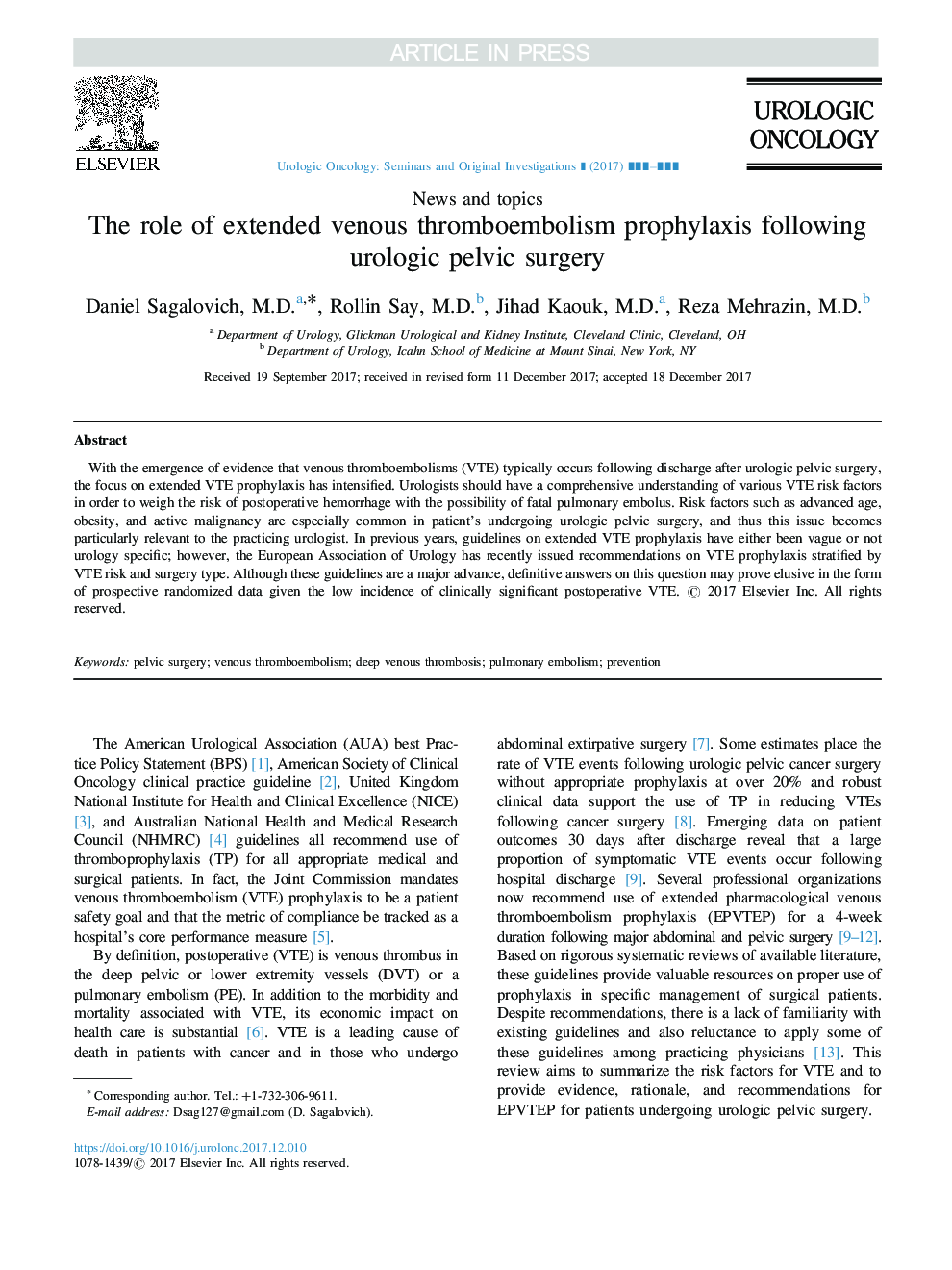| Article ID | Journal | Published Year | Pages | File Type |
|---|---|---|---|---|
| 8790107 | Urologic Oncology: Seminars and Original Investigations | 2018 | 5 Pages |
Abstract
With the emergence of evidence that venous thromboembolisms (VTE) typically occurs following discharge after urologic pelvic surgery, the focus on extended VTE prophylaxis has intensified. Urologists should have a comprehensive understanding of various VTE risk factors in order to weigh the risk of postoperative hemorrhage with the possibility of fatal pulmonary embolus. Risk factors such as advanced age, obesity, and active malignancy are especially common in patient's undergoing urologic pelvic surgery, and thus this issue becomes particularly relevant to the practicing urologist. In previous years, guidelines on extended VTE prophylaxis have either been vague or not urology specific; however, the European Association of Urology has recently issued recommendations on VTE prophylaxis stratified by VTE risk and surgery type. Although these guidelines are a major advance, definitive answers on this question may prove elusive in the form of prospective randomized data given the low incidence of clinically significant postoperative VTE.
Related Topics
Health Sciences
Medicine and Dentistry
Oncology
Authors
Daniel M.D., Rollin M.D., Jihad M.D., Reza M.D.,
